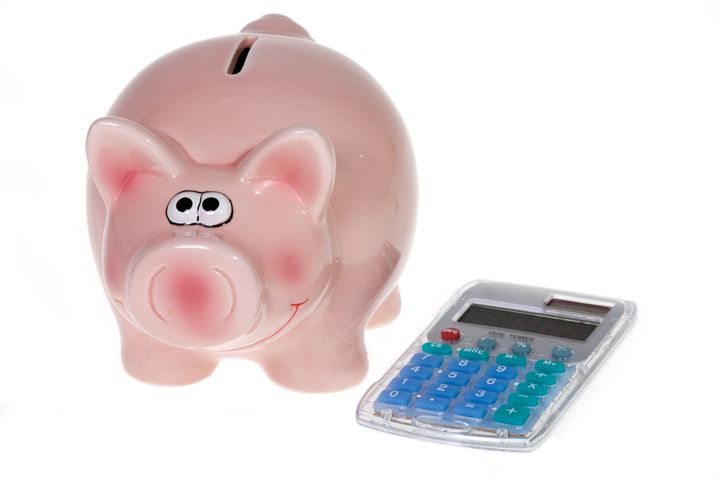
Around our house, we're big fans of the TV show Modern Family. So when I read recently that each of the four kids on the show would be getting $70,000 per episode, it was fun to speculate about what the child stars would spend their money on.
All I could imagine was the dim-witted little brother Luke, played by actor Nolan Gould, buying some bizarre contraption that could fly, play the banjo, and speak in French all at the same time.
But then I read an article that contained two surprising facts. First, Gould, who is 13 years old, isn't dim-witted at all. In fact, he is a Mensa-level genius, with a 150 IQ.
And what was really interesting to me was that despite his huge salary, his mom gives him a set allowance of just $30 a week, and only during the time he works. When it's summertime, he doesn't get any cash from his mother at all.
"I have to balance myself so that I don't spend it all during the time that I'm working and then not have anything for the summer," he told one publication.
As for the rest of his salary? "Most of it goes into a college fund and I'm saving," he says.
Sounds like Nolan gets those smarts from his mom.
Allowance: A Brief History
Giving allowance is an American tradition that picked up steam before the start of the 20th century. As there was more stuff for youngsters to buy -- tickets to see a movie, toys, candy -- child-rearing experts started to tout allowance as a way to instill good spending habits.
According to a survey conducted by the White House Conference on Child Health and Protection, by the mid-1930s, 50 percent of kids were on the parental payroll.
Cut to today: Nearly two-thirds of parents reportedly pay their kids an allowance. The average kid age 25 and younger receives about $16 a week.
That breaks down to $6 for 4- to 12-year-olds, $15 for 13- to 17-year-olds, and $35 for 18- to 25-year-olds, according to a recent survey from the American Institute of CPAs.
For the next two weeks I'm going to be discussing everything you want to know about allowance but were too exhausted to ask, including how much, how necessary, and how useful the new wave of online allowance websites can be.
The Pitfalls of Old-School Allowances
With three kids, my husband and I still haven't mastered the art of giving them allowance in a timely fashion.
When my oldest, now 16, was about four years old, we decided to start with $2 a week, just so she could experience having money, putting it in a piggy bank, and saving up for something she really wanted.
But there was a problem: We often forgot to give it to her. At first we thought, "Well, if she doesn't remind us, she doesn't get it." But that seemed harsh and didn't teach much of a lesson.
My computer-oriented husband decided, wisely, to start a simple spreadsheet, and he would log in the last payment.
Then, after a few weeks went by and she asked, "Hey, don't I have some allowance coming my way?" we'd check the sheet, pay out the cash, and then close the spreadsheet until the next time.
It seemed to work okay.
But as she got older (and her brother arrived), it became clear that an allowance of just $2 a week was a little 1950s (or, more like my childhood in the 1970s).
If $2 couldn't really buy much of anything (other than unhealthy candy, which we put on the verboten list), then what good was it?
At that point, we upped the kids' allowance in line with the oft-cited rule: Give your child their age. So a 10-year-old would get $10 a week.
This worked pretty well until our daughter became a tween. If a bunch of friends were going on an outing to see a movie, should she have to use her own money for that? What about meals out on weekends? Or birthday presents for friends?
In order to really help her budget and learn about choices and priorities, the right thing to do was to give her a really bold amount per week -- $50, maybe -- and then have her pay for her lunch (school lunches, too) and presents and extras herself.
If she used it all up on cupcakes and balloons for a friend's birthday, despite the kind gesture, she couldn't have lunch that week.
Why Tough Love Allowance Didn't Work for Us
Since we are wimps, however, we couldn't do it. So we decided to stick with our nominal allowance, even though it doesn't really add up to much.
We give her cash for most activities that we think are worthy (yes to lunch out with friends; no to a wad of cash to walk around the mall) and then her little bit of allowance (adjusted each year for her age) has been socked away in the bank.
It's not a bad lesson -- she is very stingy with "her own" money and never, ever likes to spend it.
What do you think of allowance? Do you think it's important to give it, and if so, why?
(Beth's next blog: Should you automate allowance with one of the new online sites?)
Beth Kobliner is a personal finance commentator and journalist, the author of the New York Times bestseller Get a Financial Life: Personal Finance in Your Twenties and Thirties, and a member of the President's Advisory Council on Financial Capability. Visit her at bethkobliner.com, follow her on Twitter, and like her on Facebook.
This post was originally published on Mint.com.
© 2012 Beth Kobliner, All Rights Reserved